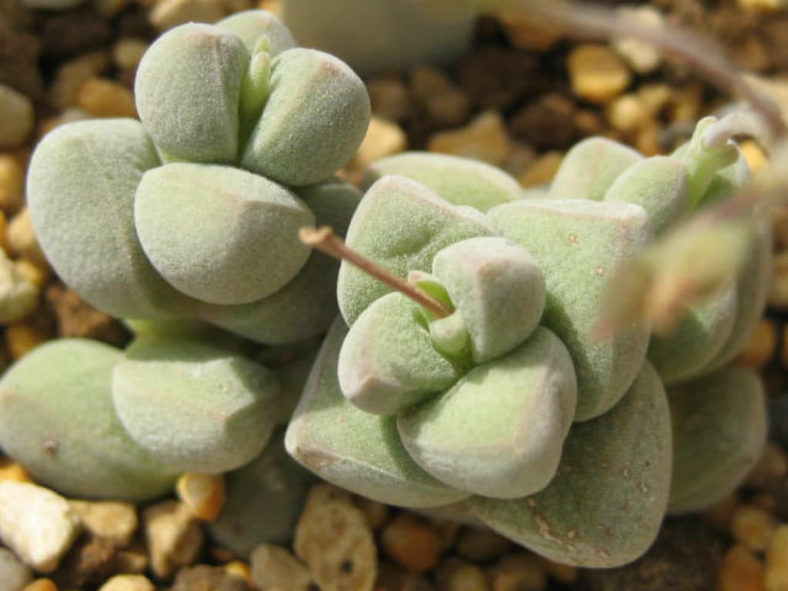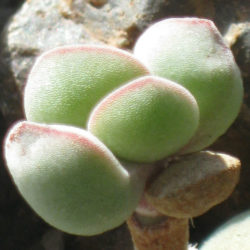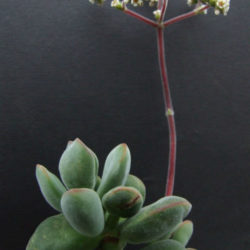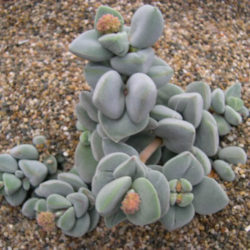Scientific Name
Crassula sericea var. hottentotta (Marloth & Schönland) Toelken
Synonym(s)
Crassula hottentotta, Crassula merxmuelleri
Scientific Classification
Family: Crassulaceae
Subfamily: Crassuloideae
Genus: Crassula
Description
Crassula sericea var. hottentotta is a small succulent with short, erect branches with internodes rarely visible between the thick, very fleshy, grey-green leaves. It is more robust than Crassula sericea var. sericea, with round papillae on the stems and leaves instead of hairs. The branches are stout, up to 4.4 inches (11 cm) long and 0.2 inches (0.5 cm) in diameter, each with 8 to 10 pairs of leaves. The leaves are triangular to triangular-ovate, flat above and strongly convex below, measuring up to 1.2 inches (3 cm) long, up to 0.8 inches (2 cm) wide, and 0.3 inches (0.7 cm) thick.
The flowers are small, tubular, dull yellow, and appear in erect thyrse with several branches ending in dense dichasia in winter, reaching up to 3.8 inches (9.5 cm) in height.
Origin
This variety is native to southwestern Namibia and South Africa (Northern Cape). It grows in rock crevices, often under overhanging rocks or shrubs, usually restricted to lower slopes.

Hardiness
USDA hardiness zone 10b to 11b: from 35 °F (+1.7 °C) to 50 °F (+10 °C).
How to Grow and Care
Crassulas are easy to grow but susceptible to mealy bugs and fungal diseases. Overwatering is sure to be fatal, as with all succulents, so err on the side of too dry rather than too wet. Never let your Crassula sit in water. If you water from beneath by letting the plant sit in a saucer of water, ensure to pour off any excess water after a few minutes.
Crassulas are generally started by division, offsets, or leaf cuttings. Plants can be easily propagated from a single leaf: sprout leaves by placing them into a succulent or cacti mix, then covering the dish until they sprout.
Repot as needed, preferably during the warm season. To repot a succulent, ensure the soil is dry before repotting, then gently remove the pot. Knock away the old soil from the roots, removing any rotted or dead roots. Treat any cuts with a fungicide. Place the plant in its new pot and backfill it with potting soil, spreading the roots as you repot. Leave the plant dry for a week or so, then begin to water lightly to reduce the risk of root rot.
See more at How to Grow and Care for Crassula.
Links
- Back to genus Crassula
- Succupedia: Browse succulents by Scientific Name, Common Name, Genus, Family, USDA Hardiness Zone, Origin, or cacti by Genus
Photo Gallery
Click on a photo to see a larger version.


